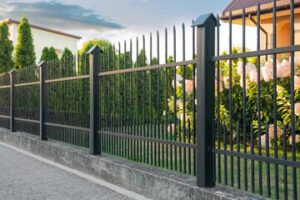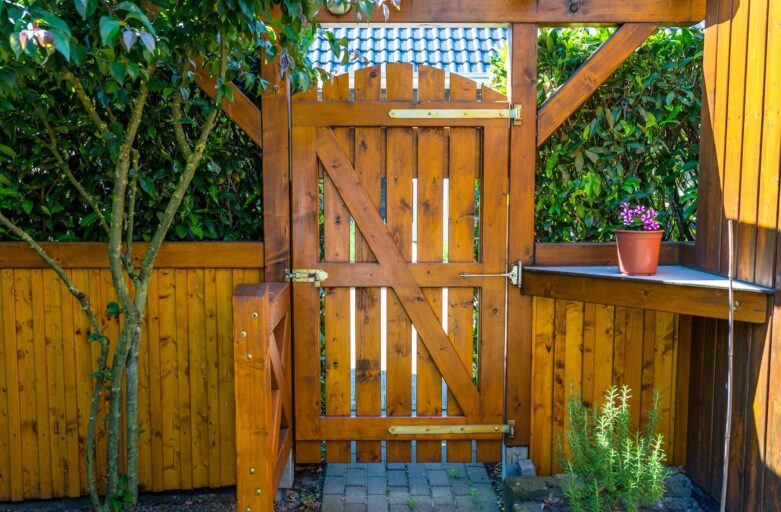Whether your fence is wood or vinyl, the first step in Round Rock Fence Repair is assessing damage. Walking around the fence and examining each panel will help you understand the scope of work needed to fix it.
A leaning fence often indicates a problem with the posts, which may have shifted due to soil conditions or strong winds. Straightening a position can be done in a few simple steps.
While wooden fences are popular for homeowners, Mother Nature poses several threats to these natural boundary structures. For example, a wood fence can become the victim of insects that cause damage from the inside out. Infestations can also lead to rot and other structural problems that require fence repair.
If you notice signs of an insect infestation, such as holes or gnawing, you may need to consider replacing your wooden fence. Insects such as termites and carpenter ants can quickly destroy fence posts and slats, even if they look in tact on the surface. Using treated lumber or a fence material that’s naturally resistant to insects can help reduce the risk of infestations and other pest issues.
Some insect species, such as powder post beetles, bore holes into wood and lay eggs inside. The larvae hatch and begin feeding on the inside of the wood, causing serious structural damage over time. Infestations of these beetles can be spotted by seeing piles of wood shavings or fine powder around the affected area. An exterminator should be contacted to ensure the problem is eliminated as soon as possible.
Other types of insects can also damage your wood fence, such as carpenter bees and horntail wasps. These flying insects build nests in wood and gnaw away at the surface, causing weakened spots. While these issues don’t pose a threat to human health, they can compromise the strength of your fence over time and allow water and fungus into the structure.
In some cases, a wooden fence can be salvaged with simple repairs. However, in other instances, it’s a good idea to replace the fence with a more durable material. For instance, if your fence has suffered significant damage from termites or wood-destroying beetles, you’ll need to replace the entire structure.
You can help protect your wooden fence from insect infestation by taking preventive steps, such as sealing the surface of your wood with a protective barrier or waterproofing product. This helps prevent moisture from absorbing into the wood, reducing the risk of rot and decay. Regularly inspecting your fence for signs of infestation is also a smart precaution.
Posts and Footings
A fence’s posts are usually set in concrete footings, which can sometimes become loose or deteriorate over time. If a post begins to sink, shift, or lean, it’s important to correct the issue right away to prevent further damage to the rest of the fence. A quick fix may involve bracing the post with wood or steel and pouring new concrete to stabilize it. Depending on the extent of the problem, it may be necessary to dig out and replace the footing with a more durable material like concrete.
If a fence post is completely rotten, it may need to be replaced entirely. In most cases, this will require digging out the existing footing and replacing it with a new one. It’s also a good idea to re-pour the concrete around the base of the new post for additional stability.
Loose or missing nails and fasteners are another common problem with fence repair. If the screws and nails that hold your fence together are loose or sagging, it’s important to replace them immediately to avoid further problems with sagging or buckling boards. When installing new fasteners, be sure to use corrosion-resistant galvanized nails or screws to ensure maximum durability.
While it’s unlikely, a wooden fence can eventually start to lean if the wood becomes too damaged or rotten. In some cases, it’s possible to straighten a wobbly fence by inserting a wedge between the post and the concrete footing. However, this is only a temporary solution and it’s best to repair or replace the post as soon as possible.
If the entire fence is leaning or falling, it’s a good idea to contact a professional for fence repair. They can install support braces ($60 to $150) or a new concrete foundation ($125 to $2,300) to help stabilize the fence.
It’s also a good idea to confirm that the fence belongs to you and not your neighbor. If you’re unsure, it’s often possible to check with your local city recorder or assessor’s office to find out. It’s also a good idea for both parties to sign a property boundary survey to document the location of the fence and ensure that any misunderstandings can be resolved quickly and fairly.
Boards and Panels
A panel is a flat piece of material that serves a specific purpose, while a board refers to a single unit. It’s important to understand the difference, as they are used differently in different contexts.
Using the wrong term can create confusion, especially in construction projects. This can lead to misunderstandings and mistakes that result in costly repairs. In the case of fences, knowing the difference between panels and boards can help homeowners keep their fences in good repair.
A fence’s primary job is to provide protection from weather and other elements that can damage materials. But even the best-made fences suffer from wear and tear over time, with some components needing frequent attention to stay in good working condition.
Wood fences should be resealed every two years. This helps to prevent moisture from rotting the posts, and it will also protect the fence from insects and mold. Homeowners can reseal their wood fences by pressure washing them first to remove dirt, moss and mildew. Then, they can apply a stain or sealant. One gallon of oil-based stain can cover 125 square feet of fencing.
Pre-built wood fence panels are more difficult to replace, but the process isn’t as labor intensive as you may think. A homeowner can usually remove a damaged panel by cutting it free from its post with a reciprocating saw, and then unscrewing the screws that hold the other end of the panel to the post. After the panel is removed, the remaining rails can be reattached to the post and the new panel can be inserted into the upper and lower slots of the post.
Vinyl and PVC fences can also be repaired, but the cost is typically higher than that of a wood fence. Most vinyl and PVC repairs are related to cracks or holes in the material, but you may also need to replace posts, rails or panels.
Like any other material, wooden fences can get damaged by severe storms, automobile accidents or falling trees. In addition to repairing damage, contractors can install support braces or concrete foundations ($60 and $150) to stabilize leaning posts or fences.
Hardware
A beautiful fence frames your property the way a picture frame frames a gorgeous photograph, so a broken one can be a real eyesore. A fence that’s in poor condition can leave your home or business unprotected and vulnerable to theft, so it’s important to inspect it regularly and address repair issues promptly. This will help you extend the life of your fence and save money in the long run.
Fences can suffer from a wide range of problems, from broken slats to rotting posts. Some damage is acute, meaning it’s a one-time problem like a fallen tree or a stray child’s toy, while other issues are more chronic and require regular maintenance. Addressing these issues quickly can prevent them from escalating into more expensive repairs and even complete replacement, saving you money over time.
When a wooden board becomes damaged, you can usually fix it by nailing another piece of wood in place. If the board is rotted, you may need to replace it completely. Wood preservatives can also help prolong the life of your fence and protect it from future damage.
Posts that have rotted can be replaced with new ones, but they may need to be concreted in at the footing level if they’re too deep in the ground. If the rot is severe, it’s best to dig up the old post and replace it, rather than risk further damage to your property.
If a gate is beginning to sag, it’s a good idea to prop it up with temporary supports until the issue can be addressed. This will relieve pressure on the hinges and reduce the chances of the gate becoming permanently out of alignment.
Cracks in wood fencing can be filled with a wood-specific glue or putty for $75 to $250, but putting off this type of repair can lead to the warping of the entire rail. If the damage is extensive, you may need to replace it altogether, costing between $135 and $400.
Fences can be repaired if they are made from pressure-treated timber and built on concrete footings. Those that are made from non-treated timber or set in concrete can often rot, especially when they’re located on a hill or in an area with excessive moisture.



